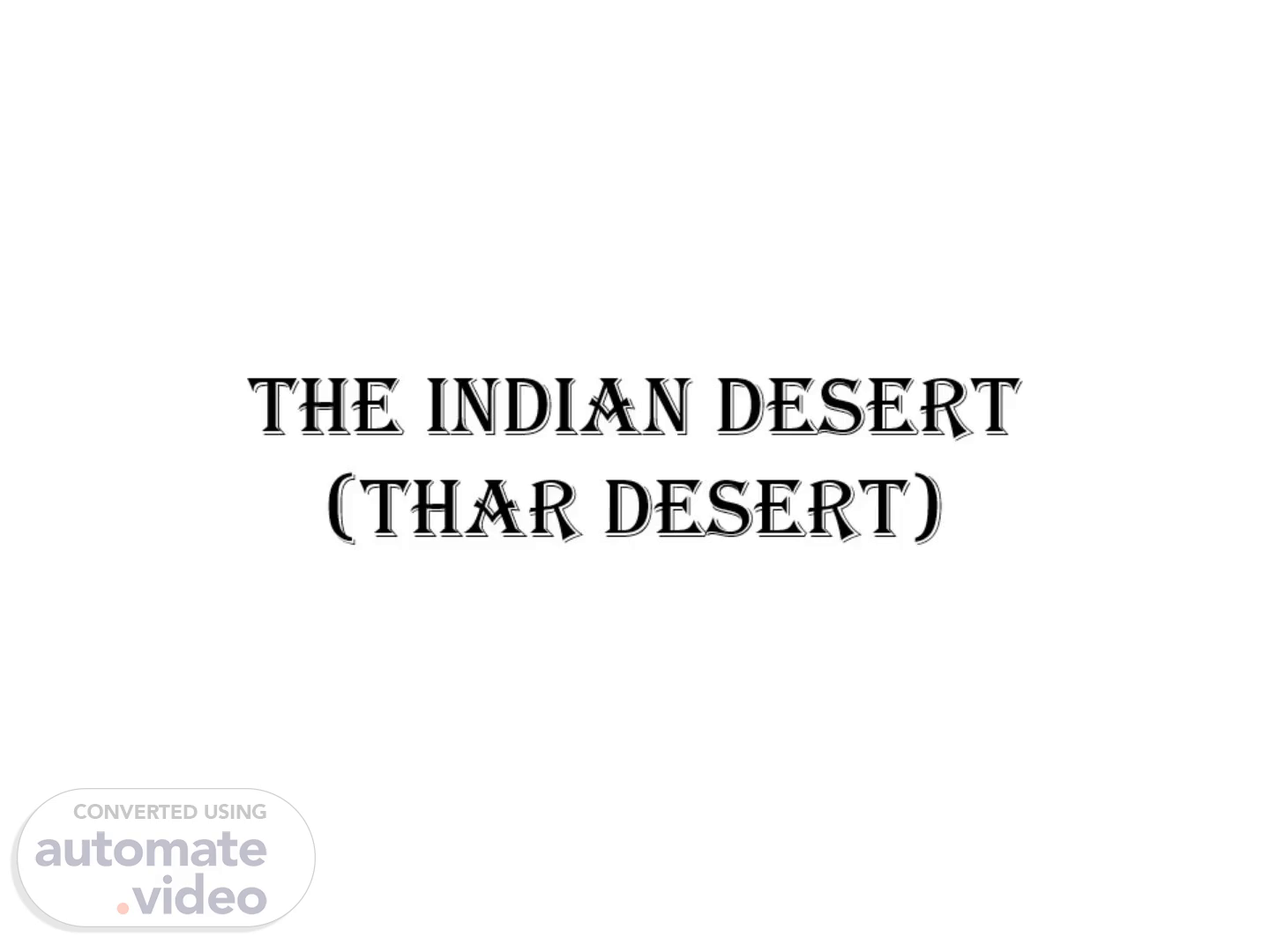Page 1 (0s)
[Audio] The Indian Desert (thar Desert). THE INDIAN DESERT (THAR DESERT).
Page 2 (6s)
[Audio] A Vast Arid Region in Northwestern India.
Page 3 (15s)
[Audio] Location and Geography: Map showing the location of the Thar Desert in India. Area: approximately 320 000 square kilometers. Spanning across states: Rajasthan Gujarat Punjab and Haryana. Average elevation: 100-150 meters above sea level..
Page 4 (39s)
Flora. Types of vegetation: - Cacti and succulents - Thorny shrubs and bushes - Drought-resistant trees (e.g., Acacia, Prosopis) - Adaptations: deep roots, small leaves, and CAM photosynthesis.
Page 5 (53s)
Fauna. Adapted species: - Camels, gazelles, and other desert mammals - Snakes, lizards, and other reptiles - Birds: sand grouse, partridges, and vultures Image: A photo of a camel or other desert animal.
Page 6 (1m 9s)
Human Settlements. Inhabited by various tribes and communities (e.g., Bishnois, Bhils) Traditional occupations: - Agriculture (cotton, wheat, pulses) - Animal husbandry (sheep, goats, camels) - Craftsmanship (textiles, pottery) Image: A photo of a desert village or a traditional craft.
Page 7 (1m 24s)
Economic Importance. Rich mineral resources: - Oil and natural gas - Gypsum, limestone, and other minerals Agriculture: - Cotton, wheat, and pulses - Fodder crops for livestock Tourism: - Desert safaris and cultural experiences - Historical sites (e.g., Jaisalmer Fort).
Page 8 (1m 39s)
Conservation Efforts. Thar Desert National Park (Rajasthan) Nara Desert Wildlife Sanctuary (Rajasthan) Efforts to protect endangered species and mitigate desertification Image: A photo of a protected area or a conservation initiative.
Page 9 (1m 52s)
Thanks. Krishna patil. Div- Diamond.
